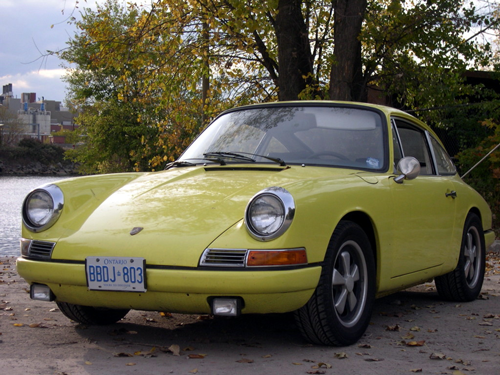I was driving to Huntsville, Ontario the other day. I had a meeting scheduled at 10:00 a.m., so I had to leave Kitchener by 6:00 a.m. It is still dark at that time in this neck of the woods. I get in my car, stop by at the nearest Tim’s for a coffee, and I’m off. I’m thinking– at least there won’t be any traffic. Poor deluded me: the highway was crammed with cars.
What happened? Did I miss something? A hurricane? An alien invasion? Amway salesmen?
No, just people heading off to work. This is insane. It is six in the morning. It is dark. It is not fun getting up at six– your body wants to stay in bed. Yet, here they are, thousands of people, all racing around in their cars as if they were going somewhere interesting.
I stopped for a second coffee in Guelph. It is now 6:30 a.m., and the Tim’s is packed. There is a line-up.
Has our society gone berserk?! People are getting up at six in the morning, getting dressed, going out into these giant mechanical beasts, and racing to the coffee shop. I think they’re doing it just to annoy me.
I used to get up at 6:00 a.m. sometimes in the summer to go fishing. Now, I am not, by nature, an early riser, but there was one compensating charm. It was quiet and there was no traffic on the roads. I drove to a pier in a small village and dropped my line into the water and actually took pleasure in watching the nearby towns quietly, gradually, wake up. After an hour or so, you’d see people walking around, getting into their cars. By 8:00, there would be a few more fishermen, retirees who didn’t feel strongly enough about catching anything to want to get up any earlier.
This is sane. This makes sense.
But nowadays– 6:00 in the morning and the highways are full. There are delays. There are tie-ups, traffic snarls, enraged drivers pounding their dashboards. Racing, racing, racing— where to? That’s the bizarre thing. There are so many cars on the road at all hours of the day that you can’t go anywhere anyway. You just sit there in traffic, waiting, waiting, waiting. This is madness.
People— stay home! Don’t get up. Don’t get on the road. Don’t line up at Tim’s at 6:30 a.m. for coffee. Stay in bed. Sleep. Ignore the alarm. Quit your jobs. Join a religious order. Work at home. Spend more time with your families. Just stay off the roads.
I do have a solution. It’s so simple, I can’t believe that nobody else has thought of it before now.
You have to understand that we really do have lots of roads. There are millions of miles of roads. They go everywhere. Some of these roads are 16 lanes wide. That’s plenty. We don’t need any more. We also have enough cars. Everybody has one. That’s enough. So the problem is, that too many people are putting their cars on the highway at the same time. And you know the crazy thing: we let them! We have this big traffic jam in the 401 and people are moving about an inch an hour and somebody else wants to get on the highway— and we let them! This is insane. Let’s work it out. We need to tell these people, “sorry, there’s no more room.” It’s simple.
First, we figure out how many cars can be on the highway on any given day before we start getting traffic congestion. Then we convert this figure to what I call “driver miles”, which is, the number of miles people can drive on a given day before exceeding the capacity of our highways. In other words, at a certain point, we can calculate that we have no more driver-miles left– there is no more space on the roads. Then we take the driver miles and share it out with all the drivers of Ontario. Maybe we put a little computer in everybody’s car, with a cell-phone and a modem. And that’s it. You can only drive your allocated driver-miles on any given day. When you’ve used them up, you have to get off the roads. You’ll have to stay home. And no company will be allowed to fire an employee just because he had to obey the law and stay home. This will make the law popular with workers, if not corporations. But then, there’s a lot more workers than corporations anyway.
Simple, isn’t it? Of course, people who don’t need all of their driver-mile credits can sell them to other people if they want to. Or, you could save them up and one day make a really big trip.
And the biggest advantage of all: when you make your trip, you will actually be able to go somewhere.

